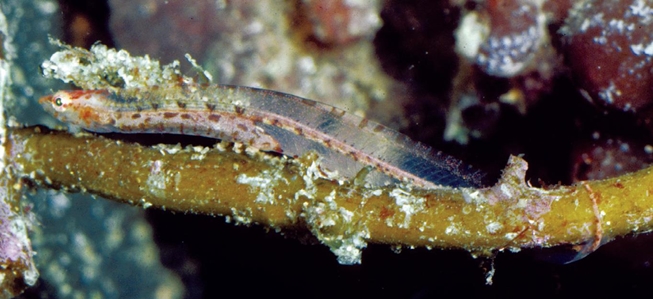General Description
Body very long, slender, eel-like, with long-based dorsal and anal-fins united with the tail; gill opening a small slit on the underside; pectoral and pelvic fins absent; head short with a single sensory pore above and behind each eye; head of females slightly more pointed than that of males. Body mostly transparent with internal organs visible through skin; dorsal fin with a row of brownish to greenish blotches; head spotted or plain; males with irregular reddish to brownish bars on sides. To 4.7 cm.
Biology
Almost identical to the Dwarf Shore Eel, and only able to be identified with a microscope.
Habitat
Shallow seagrass beds and nearby reef areas, in depths of 1-10 m.
Reefs
Seagrass meadows
Distribution guide
South-eastern Australia.
Species Group
Fishes › Clingfishes and shore-eels
Depth
Water Column
Max Size
5 cm
Commercial Species
No
Global Dispersal
Native to Australia
Identify
Conservation Status
- DSE Advisory List : Not listed
- EPBC Act 1999 : Not listed
- IUCN Red List : Not listed






